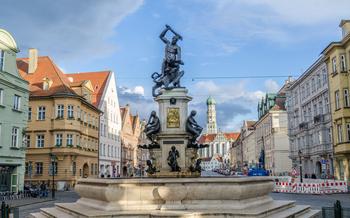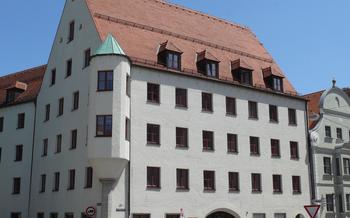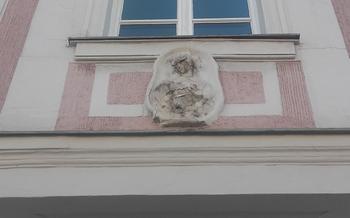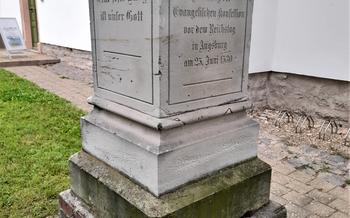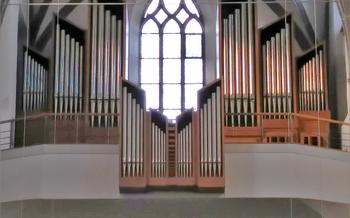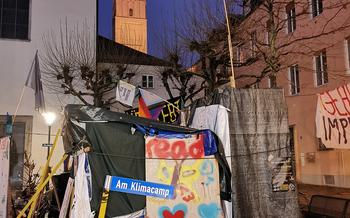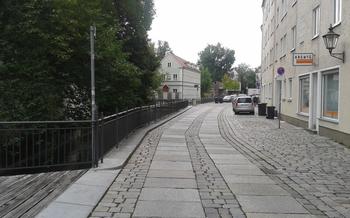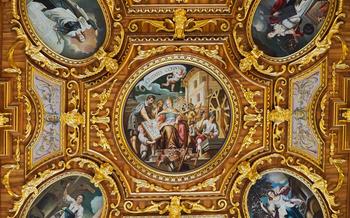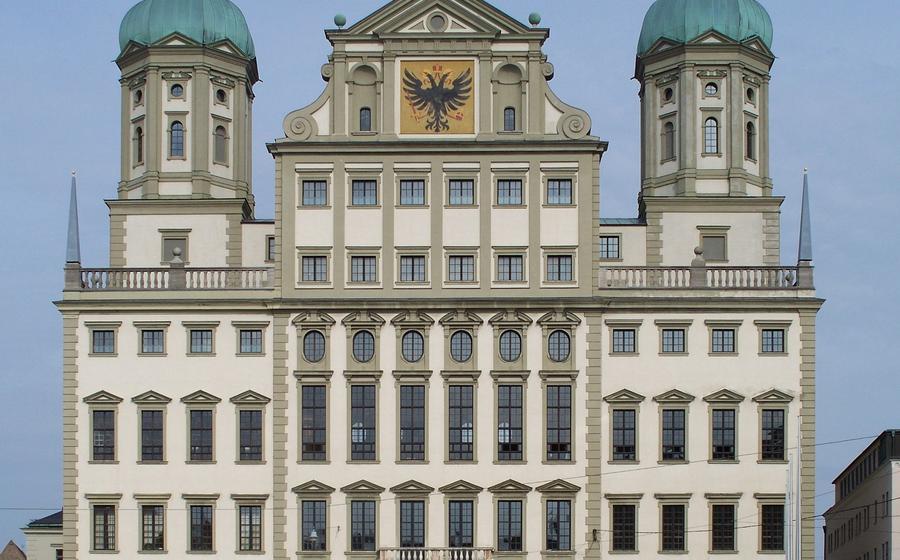
Augsburg Town Hall (Rathaus)
- Historical Significance
- Location and Accessibility
- Opening Hours and Admission
- Architectural Highlights
- Historical Exhibits and Displays
- Views from the Tower
- Golden Hall and Hall of Mirrors
- City Council Sessions
- Augsburg City Archives
- Town Hall Square and Surroundings
- Guided Tours and Audio Guides
- Accessibility and Facilities
- Nearby Attractions
- An Insider's Secret: Discovering the Hidden Gems of the Town Hall
Historical Significance
Augsburg, a city steeped in history and culture, proudly boasts the Augsburg Town Hall (Rathaus) as one of its most iconic landmarks. The Town Hall's history is intertwined with the city's own evolution, serving as a symbol of Augsburg's political, economic, and cultural significance throughout the centuries. Constructed in the 14th century and expanded in the 17th century, the Town Hall's architectural style blends Gothic and Renaissance elements, reflecting the city's rich artistic heritage. Over the years, this grand edifice has witnessed countless events that shaped Augsburg's destiny, from imperial diets and peace negotiations to the establishment of the city as a free imperial city in 127Notable figures such as Emperor Charles V and Martin Luther have graced its halls, leaving an indelible mark on its legacy.
Location and Accessibility
The Augsburg Town Hall is conveniently situated in the heart of the city, at Rathausplatz To reach it, visitors can take advantage of the city's excellent public transportation system. The nearest tram stop is Rathausplatz, served by lines 1, 2, and Alternatively, visitors can take bus lines 23, 35, 41, or 42 to the Rathaus stop. For those arriving by car, there are several parking garages nearby, including the Rathaus Tiefgarage and the City Galerie parking garage. The Town Hall's central location makes it easily accessible on foot, allowing visitors to explore the surrounding area and nearby attractions at their leisure.
Opening Hours and Admission
The Augsburg Town Hall welcomes visitors with open doors during specific hours to allow them to explore its grandeur and immerse themselves in its historical significance. The opening hours vary depending on the season and may be subject to occasional changes or closures for special events. It is advisable to check the official website or contact the Town Hall administration for the most up-to-date information.
Admission to the Town Hall is generally free of charge, allowing visitors to wander through its halls and admire its architectural wonders without any financial burden. However, certain special exhibitions or events may require a nominal fee or ticket purchase. These fees typically contribute to the upkeep and preservation of the Town Hall and its collections.
Guided tours of the Town Hall are available for those who wish to delve deeper into its history and intricacies. These guided tours are conducted by knowledgeable and passionate guides who bring the Town Hall's stories to life. Visitors can book these tours in advance or inquire about their availability upon arrival. The schedules and reservation procedures for guided tours may vary, and it is recommended to check with the Town Hall's information desk for specific details.
Architectural Highlights
The Augsburg Town Hall is renowned for its architectural splendor, showcasing a harmonious blend of Renaissance and Baroque styles. Its exterior facade captivates visitors with intricate carvings, decorative gables, and ornate oriel windows. The central tower, a symbol of the city's power and prestige, rises majestically above the building, offering breathtaking panoramic views. Inside, the Town Hall boasts an equally impressive array of architectural features. The grand staircase, with its sweeping curves and intricate banisters, leads to the Golden Hall, the heart of the building. The Golden Hall, true to its name, shimmers with gold leaf decorations, elaborate paintings, and magnificent chandeliers, creating an awe-inspiring ambiance. Other notable rooms include the Hall of Mirrors, adorned with mirrored walls and an ornate ceiling, and the Council Chamber, where important decisions shaping the city's destiny have been made for centuries.
Historical Exhibits and Displays
Stepping inside the Augsburg Town Hall is like embarking on a journey through time. The building houses a treasure trove of exhibits and displays that bring the city's rich history to life. Permanent exhibitions showcase the development of Augsburg from its humble beginnings as a Roman settlement to its rise as a prosperous trade and banking center during the Middle Ages. Visitors can delve into the stories of influential figures who shaped the city's destiny, such as the Fugger family, whose financial prowess and patronage of the arts left an indelible mark on Augsburg. Temporary exhibitions delve into specific themes or events, offering fresh perspectives and insights into the city's past. Through interactive displays, multimedia presentations, and carefully curated artifacts, the Town Hall offers a multidimensional experience that transports visitors back in time, allowing them to witness the triumphs and tribulations that have shaped Augsburg into the vibrant city it is today.
Views from the Tower
Ascend the Town Hall's observation tower, a remarkable architectural feature that offers unparalleled panoramic vistas of Augsburg and its picturesque surroundings. The tower stands tall, allowing visitors to soak in breathtaking views from a unique perspective. From this vantage point, you can admire the city's skyline, with its blend of historic and modern structures. Gaze upon the majestic Augsburg Cathedral, with its soaring spires reaching towards the heavens. Spot the Perlach Tower, another iconic landmark, standing sentinel over the city. On clear days, you might even catch a glimpse of the majestic Bavarian Alps, their snow-capped peaks glistening in the sunlight. Whether you're a photography enthusiast capturing the city's beauty or simply seeking a moment of tranquility, the Town Hall's observation tower promises an unforgettable experience. Remember to check the opening hours of the tower, as they may vary seasonally, and plan your visit accordingly.
Golden Hall and Hall of Mirrors
The Golden Hall, also known as the Goldener Saal, is the grandest and most opulent chamber within the Augsburg Town Hall. It serves as a ceremonial venue for official receptions, banquets, and special events. The hall's interior is adorned with intricate gold leaf decorations, opulent paintings, and impressive chandeliers, creating a majestic and awe-inspiring atmosphere.
Adjacent to the Golden Hall is the Hall of Mirrors, a smaller but equally stunning room known for its mirrored walls and ornate ceiling. This elegant space is often used for special events and functions, such as weddings, conferences, and private parties. The mirrored walls reflect the hall's grandeur, creating an illusion of infinite space and adding to its magical ambiance.
City Council Sessions
The Augsburg Town Hall serves as the seat of the Augsburg City Council, the city's governing body. It is here that elected officials meet to discuss and make decisions on matters affecting the city and its citizens. Council sessions are held regularly, typically once or twice a month, and are open to the public. Visitors are welcome to attend and observe the proceedings, gaining insights into the democratic process and the workings of local government. These sessions provide an opportunity to witness firsthand the debates, discussions, and decisions that shape the future of Augsburg.
Augsburg City Archives
Within the historic walls of the Town Hall lies a treasure trove of knowledge and history: the Augsburg City Archives. This invaluable repository houses a vast collection of documents, manuscripts, and records that chronicle the city's rich past, dating back to the Middle Ages.
For researchers, historians, and genealogists, the Augsburg City Archives is an indispensable resource. Its extensive holdings include everything from medieval charters and legal documents to maps, photographs, and personal diaries. These precious records offer a glimpse into the lives of Augsburg's citizens, the city's political and economic development, and its role in shaping German history.
The archives are not just a place of study and research; they also serve as a bridge between the past and the present. Through exhibitions, workshops, and educational programs, the archives actively engage the community, fostering a deeper understanding of Augsburg's heritage and its relevance to contemporary life.
Whether you're a history buff, a researcher, or simply curious about Augsburg's past, a visit to the City Archives is a must. Here, you'll find the pieces that make up the intricate tapestry of Augsburg's story, waiting to be discovered and explored.
Town Hall Square and Surroundings
The Town Hall Square, where the Augsburg Town Hall stands proudly, is a vibrant and historically rich public space that serves as a gathering place for locals and visitors alike. Surrounding the square are several notable landmarks and attractions that contribute to its unique atmosphere. The Perlach Tower, with its distinctive onion-shaped dome, stands tall as a symbol of Augsburg's medieval past. The Augustusbrunnen fountain, with its bronze figures and water features, adds a touch of elegance and tranquility to the square. The City Market, held every Saturday, transforms the area into a bustling marketplace, where vendors sell fresh produce, flowers, and local delicacies. Throughout the year, the square hosts various events, festivals, and markets, creating a lively and festive ambiance. Take a leisurely stroll around the Town Hall Square, soak in its rich history, and enjoy the vibrant atmosphere that makes it a beloved spot in Augsburg.
Guided Tours and Audio Guides
Guided tours of the Augsburg Town Hall are available for visitors who wish to delve deeper into its history, architecture, and significance. These tours are typically conducted by knowledgeable guides who provide insights into the Town Hall's past, its role in the city's governance, and the notable events that have taken place within its walls. Tours are offered in various languages, including English, German, and Spanish, to accommodate international visitors.
During the tour, visitors are guided through the Town Hall's grand entrance, the impressive Golden Hall, the Hall of Mirrors, and other notable rooms. The guides share fascinating stories and anecdotes about the Town Hall's construction, its architectural features, and the people who have shaped its history. Visitors can learn about the intricate details of the Town Hall's design, the symbolism behind its decorations, and the events that have unfolded within its walls over the centuries.
In addition to guided tours, audio guides are also available for visitors who prefer to explore the Town Hall at their own pace. These audio guides provide a self-guided tour with commentary and explanations of the Town Hall's highlights, allowing visitors to discover its secrets and history independently.
Accessibility and Facilities
The Augsburg Town Hall has been thoughtfully designed to cater to visitors of all abilities. It features ramps and elevators, ensuring that wheelchair users and individuals with limited mobility can easily access all levels of the building. Spacious corridors and well-lit interiors further enhance accessibility. Visitors can also take advantage of the cloakroom to store their belongings and the restrooms conveniently located within the Town Hall. For those seeking a deeper understanding of the Town Hall's history and significance, audio guides are available in multiple languages, offering an immersive storytelling experience. The friendly and knowledgeable staff at the Town Hall is always ready to assist visitors with any inquiries or special requests, ensuring a seamless and enjoyable visit for everyone.
Nearby Attractions
Augsburg offers a wealth of attractions within easy reach of the Town Hall. Just a short walk away, visitors can marvel at the grandeur of the Augsburg Cathedral, a stunning example of Gothic architecture. Its soaring spires dominate the city's skyline and offer panoramic views from the observation deck.
History enthusiasts will delight in exploring the Fuggerei, the world's oldest social housing complex, founded by the wealthy Fugger family in the 16th century. This charming neighborhood, still inhabited today, offers a glimpse into Augsburg's past and its philanthropic traditions.
For those interested in literature and theater, the Brecht House, former residence of renowned playwright Bertolt Brecht, is a must-visit. This museum showcases Brecht's life and work, offering insights into the influential German dramatist and his impact on modern theater.
Other nearby attractions include the Augsburg Art Gallery, housing an impressive collection of paintings, sculptures, and graphic art; the Roman Museum, showcasing Augsburg's Roman heritage; and the Botanic Garden, a tranquil oasis with a diverse array of plant species.
With its rich history, stunning architecture, and abundance of cultural attractions, Augsburg offers visitors a captivating blend of heritage and modernity. Whether exploring the Town Hall, wandering through the picturesque streets, or immersing themselves in the city's vibrant arts and culture scene, visitors are sure to create lasting memories in this enchanting Bavarian gem.
An Insider's Secret: Discovering the Hidden Gems of the Town Hall
As you wander through the opulent halls of the Augsburg Town Hall, take a moment to seek out its hidden treasures. One such gem is the small, unassuming door tucked away in a corner of the Golden Hall. Behind this door lies a spiral staircase that leads to the tower's upper levels, offering breathtaking panoramic views of the city. While not officially open to the public, if you happen to encounter a friendly staff member, they might just grant you access to this secret vantage point. Remember, a polite inquiry and a genuine smile can go a long way in unlocking hidden experiences within the Town Hall's walls.
